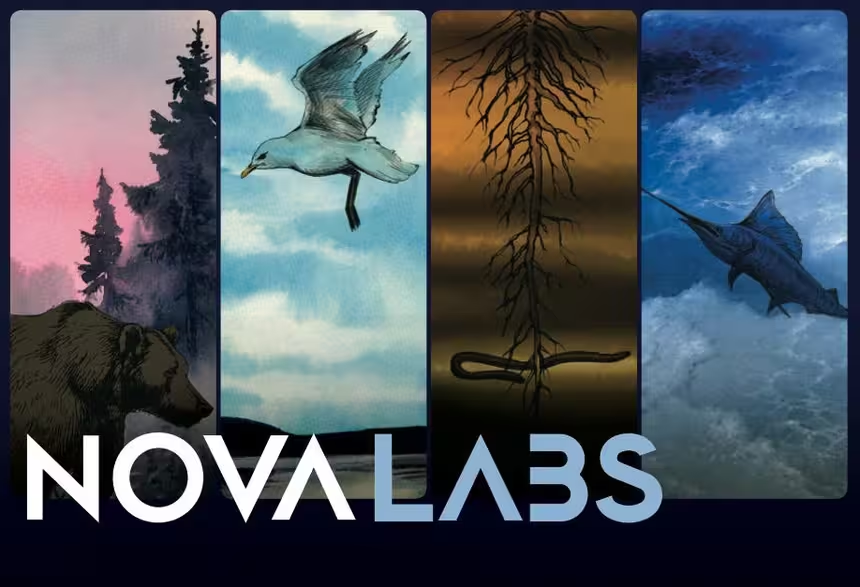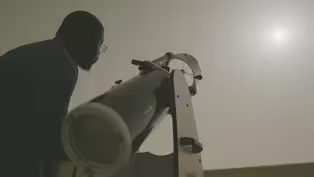
These Ancient Stones Helped Track the Seasons
Clip: Season 50 Episode 2 | 2m 57sVideo has Closed Captions
Mysterious stone arrangements reveal Senegal’s ancient connections to astronomy.
Along the river Gambia in Senegal, there are more than a thousand stone circles. The people who placed these stones would have observed how the locations of sunrise and sunset varied over the year.
Problems playing video? | Closed Captioning Feedback
Problems playing video? | Closed Captioning Feedback
Major funding for NOVA is provided by the NOVA Science Trust, the Corporation for Public Broadcasting , and PBS viewers.

These Ancient Stones Helped Track the Seasons
Clip: Season 50 Episode 2 | 2m 57sVideo has Closed Captions
Along the river Gambia in Senegal, there are more than a thousand stone circles. The people who placed these stones would have observed how the locations of sunrise and sunset varied over the year.
Problems playing video? | Closed Captioning Feedback
How to Watch NOVA
NOVA is available to stream on pbs.org and the free PBS App, available on iPhone, Apple TV, Android TV, Android smartphones, Amazon Fire TV, Amazon Fire Tablet, Roku, Samsung Smart TV, and Vizio.
Buy Now

NOVA Labs
NOVA Labs is a free digital platform that engages teens and lifelong learners in games and interactives that foster authentic scientific exploration. Participants take part in real-world investigations by visualizing, analyzing, and playing with the same data that scientists use.Providing Support for PBS.org
Learn Moreabout PBS online sponsorship- [Narrator] Was there astronomy in Senegal before Islam?
Malam would like to know.
Clues can be found along a vast stretch of the river Gambia, where more than 1,000 stone circles have been constructed.
They were built over thousands of years, right up until the 16th century.
Many human remains and artifacts have been excavated at the sites.
Scientific research has mainly focused on the burial practices and rituals of the builders.
That is about to change.
Malam is joined by archeologist Aime Contusant, and planetary scientist, Mark Bowie, who is also curious about humanity's ancient connections to astronomy.
They will look for evidence of astronomical alignments at the sites.
(lively music) They will begin their survey at Senegambian, the largest stone circle site.
Neither the local people, nor visiting archeologists know who built these circles.
(goats bleating) - There is no connection between the people who build these kind of sites and the people who are living here right now.
It's just like they build this kind of site, use them and they just disappear.
- [Researcher] There is a solitary stone that catches my attention.
I think it's important because there are other stones nearby that may align with it.
- You were saying this has a special orientation.
- Yeah.
- And I'm measuring this angle here to the second stone.
- Yeah.
- Which according to my calculation is where the sun sets at the beginning of the summer at the solstice.
- Yeah.
- So when I look this direction, I confirm the angle.
124 degrees to that rock is where the sun would rise at the beginning of winter.
So when I look this direction, this angle is very, very close to the equinox or the beginning of spring and fall.
- [Narrator] The people who placed these stones would have observed how the locations of sunrise and sunset varied over the year.
When the sun reached its northernmost point, it was the longest day, the summer solstice.
At its southernmost point, the shortest day, the winter solstice, and when the sun rose directly east, the days and nights were equal in length, the equinoxes.
By aligning stones to these points, the builders would have been able to track the seasons.
(pensive music)
How to Calculate Time With an Islamic Astrolabe
Video has Closed Captions
Clip: S50 Ep2 | 2m 38s | It is one of Islamic science’s most important and complex astronomical instruments. (2m 38s)
Star Chasers of Senegal Preview
Video has Closed Captions
Preview: S50 Ep2 | 27s | A visionary scientist investigates the deep history of astronomy in West Africa. (27s)
Providing Support for PBS.org
Learn Moreabout PBS online sponsorship
- Science and Nature

Capturing the splendor of the natural world, from the African plains to the Antarctic ice.













Support for PBS provided by:
Major funding for NOVA is provided by the NOVA Science Trust, the Corporation for Public Broadcasting , and PBS viewers.




